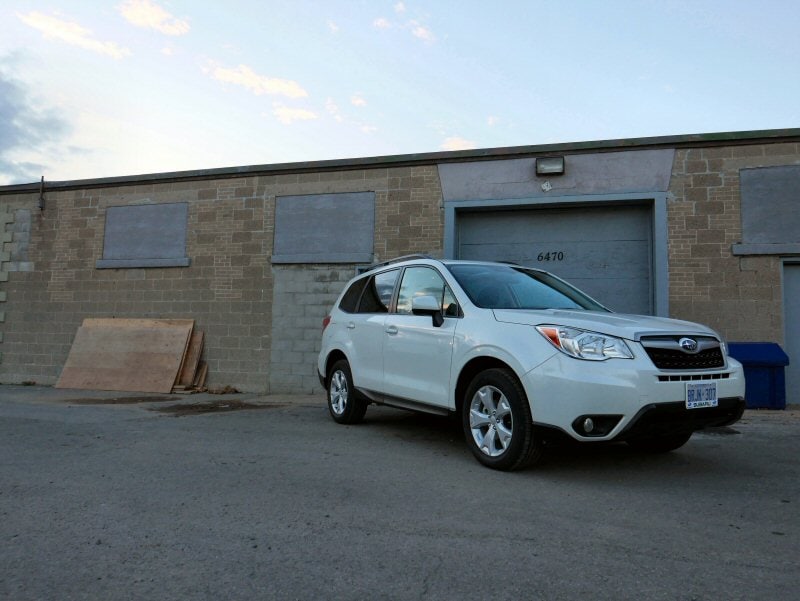Recent Articles
Popular Makes
Body Types
2016 Subaru Forester Road Test and Review
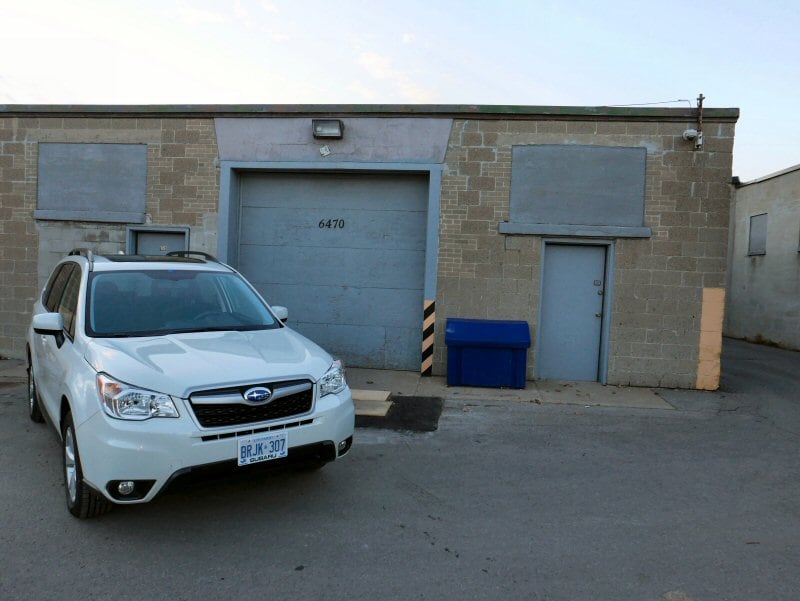
The 2016 Subaru Forester is a vehicle that realizes that the badge on the grille is a lot more important than the nameplate on the tailgate. The very definition of a team player, the Forester cedes most of the Subaru spotlight to the flashy WRX sports sedan while quietly toiling harder than anyone else in the background and racking up sales numbers that see it frequently leading the way for the brand. There is no glory in what the Subaru Forester does - nor, indeed, for many of the compact SUVs that it shares the market with. Were one to award all-star slots based on competence alone, however, then the Forester would certainly make the starting line-up with its refreshing combination of practicality, affordability, and safety. A left-brain choice in a right-brain world, Subaru's most compelling sport-utility vehicle might be plainer than rivals like the Ford Escape and the Hyundai Tucson, but it still managed to leave me impressed after the week we spent together.
More Room Than The Rest
The 2016 Subaru Forester has thus far avoided the temptation to squeeze a third row of seating into its boxy confines, a tug that pulls hard at the pens of product planners seeking to broaden the appeal of their entry-level people movers as much as possible. This is excellent news for families, as it means not having to pay more for a back seat of questionable comfort, plus the bonus of added cargo space and extra room for those riding just behind the drive and front passenger. The Subaru Forester's 34.4 cubic feet of cargo space with all five positions occupied is generous enough, but folding down the second row of accommodations reveals a just under 75 cubes in total, a figure that trumps every other compact SUV in the segment. The upright shape of its cabin also makes it easy to take advantage of nearly every inch without having to buy any form-fitting luggage. Of course, as with most modern sport-utility vehicles the Forester can be ordered with a panoramic sunroof, and if you tick off this box on the option sheet then you'll see almost 10 percent of the Subaru's cargo volume be swallowed up by the lower roofline.
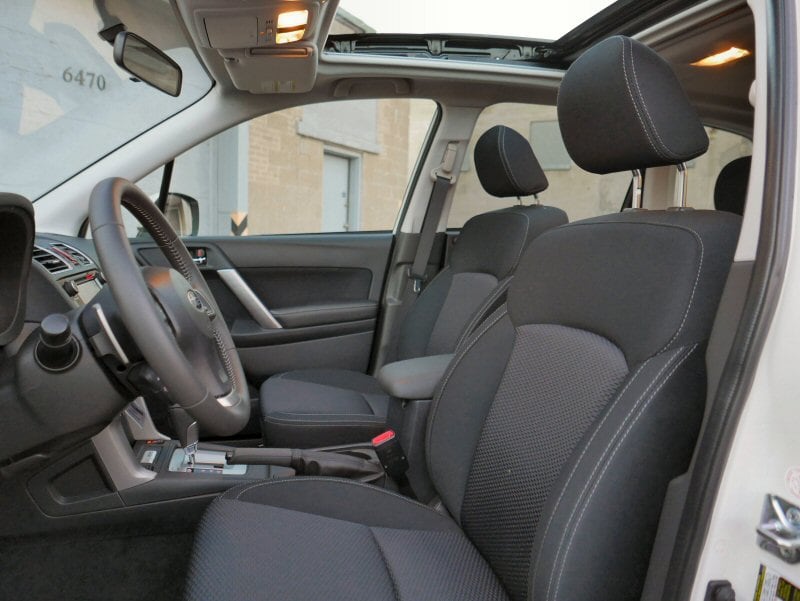
Simple Design Cues Rule The Forester Inside and Out
Some Amish think buttons proud, preferring the simplicity of hooks and clasps to protect their modesty and fasten their garments against the elements. I wouldn't say that the designers of the 2016 Subaru Forester have seen 'The Witness' a few too many times, but there's a similar philosophy guiding the visual style of the SUV that finds itself repeated throughout the Subaru line-up. Although strictly adhering to function over form is largely in the Japanese automaker's past, the Forester remains a straightforward silhouette that has grown more rounded over the years but hasn't strayed far from its two-box origins. Not exactly handsome, but certainly inoffensive from every angle, the Forester (especially when found in one of its more affordable trim levels) is an expert at fading into the background - or parking lot - in most neighborhoods. Much the same can be said about the Subaru Forester's cabin, which is pinned together by easy-to-clean fabrics, durable plastics, and big buttons and dials that are easy to use even when wearing winter gloves. If it seems like I'm criticizing the Forester for embracing a lack of complication, I'm not - I appreciate Subaru's honesty regarding what its target buyer is looking for in an SUV - but it bears pointing out that those seeking more fashionable fare should broaden their search to include alternatives like those I mentioned in the introduction.
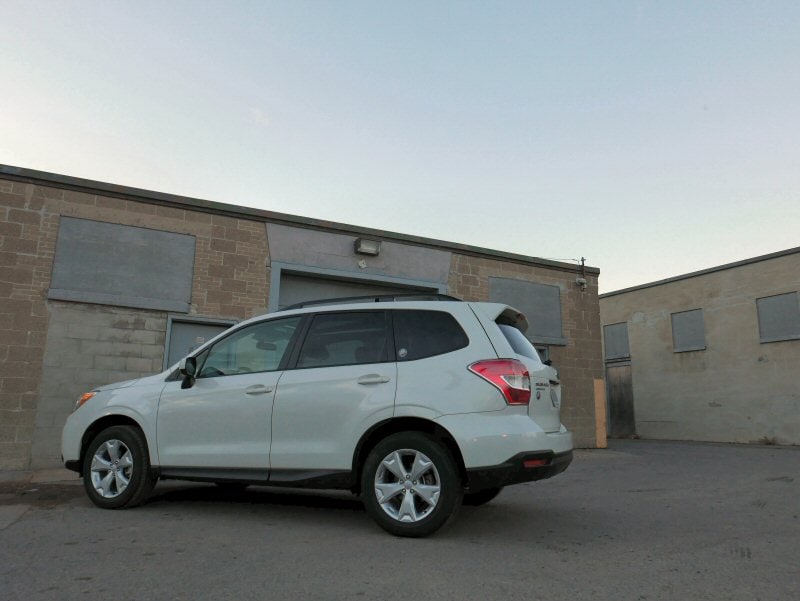
Strong Suite Of Features, But Don't Look For Luxury
The 2016 Subaru Forester's quasi-Mennonite approach to style thankfully doesn't extend to its feature set, which includes most if not all of the technologies and conveniences modern families have been trained to crave by carefully-crafted marketing campaigns. As such, even the base 2.5i trim (MSRP $22,395) provides items such as a touchscreen entertainment and communications system, HD radio, Bluetooth connectivity, a rearview camera, and a USB port (in addition to essentials like cruise control, and power windows and door locks). The sweet spot of the Forester's line-up is the 2.5i Premium (MSRP $25,295), which throws in a larger LCD touchscreen, 17-inch alloy wheels in place of the steelies found on the entry-level edition, more safety gear, a louder stereo system, heated seats (with power adjustments for the driver), a recline feature for the second row, and the space-sapping panoramic sunroof. A lightly-optioned 2.5i Premium was the model I tested, and after having driven every other edition of the Forester I have to say the value equation starts to stretch a bit thin once you move up to the $28,795 2.5i Limited (leather upholstery, power liftgate, automatic climate control, fog lights, standard automatic transmission) and especially the $30,795 2.5i Touring (18-inch wheels, keyless entry and ignition, HID headlights, dual automatic climate control, upgraded sound system). You can also opt for the 2.0XT Premium (MSRP $29,195) and 2.0XT Touring (MSRP $33,795) trims with the more powerful turbocharged engine, but the Subaru Forester simply isn't a luxurious vehicle even when you're paying premium dollars for extra features, and I recommend sticking with a moderately-equipped model to maximize value.
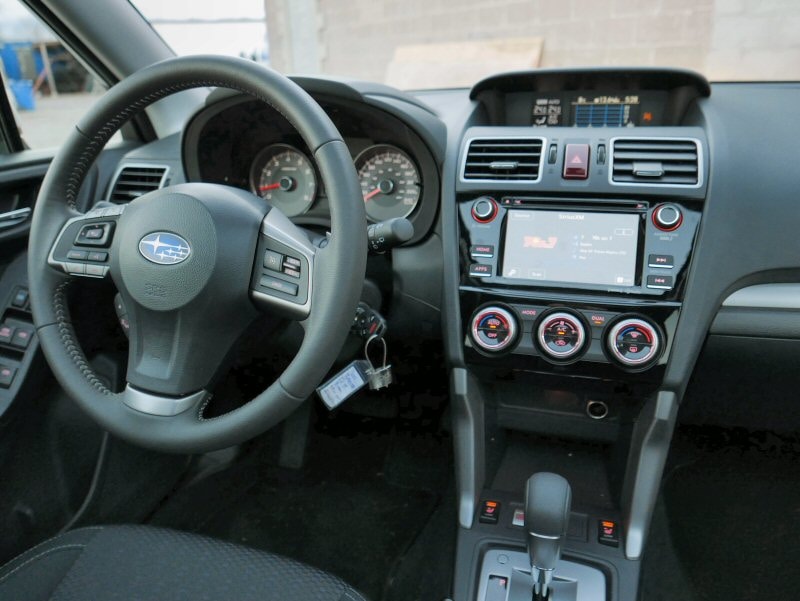
Infotainment Remains a Challenge for Subaru
You'll notice that there are two infotainment systems available with the 2016 Subaru Forester, one a 6.2-inch and the other measuring slightly larger at 7-inches. The design and logic of its LCD touchscreens has long been a sticking point for Subaru, which even farmed out several of its head-units to aftermarket companies in an effort to deal with the problem. The units offered in the Forester are home-grown, and offer the Starlink system that assists in bridging the gap between your mobile phone and any number of Internet-enabled apps that are offered by the Subaru. Unfortunately, while an improvement over past interfaces there are still a number of head-slapping moments to had when attempting to do something as simple as access satellite radio presets while simultaneously viewing the name of the channel, track, and artist you are listening to, for example. The presence of only two physical navigation buttons on my tester's center stack - for Home and Apps, respectively - was also frustrating when attempting to quickly access various features, especially considering I never once felt the need to App it up in the Forester.
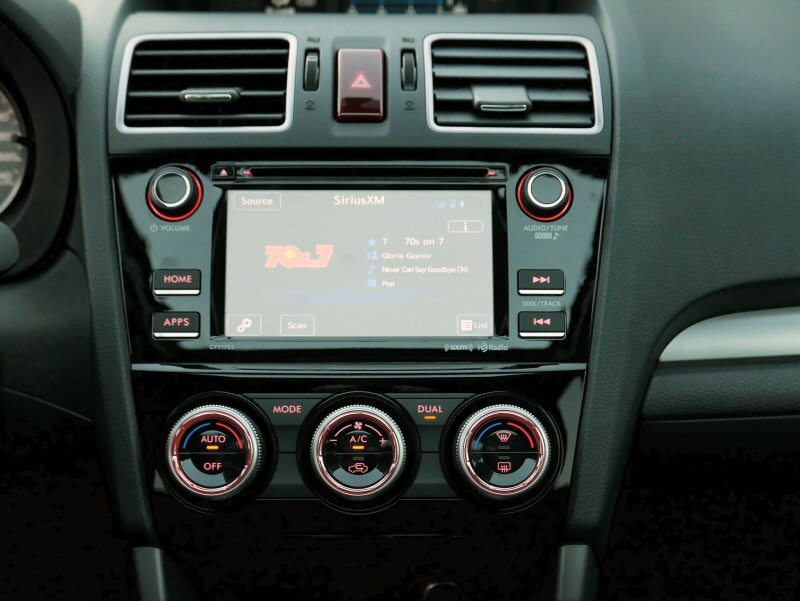
EyeSight System Continues Brand's Safety Leadership
Subaru's automobiles routinely shine in both government and independent crash testing, and the 2016 Subaru Forester is no exception. Beyond its well-crafted passenger protection structure, the Forester is also available with almost all of the latest active safety equipment. I saw 'almost' because Subaru has elected to develop a proprietary camera-based sensor system called 'EyeSight' rather than rely on the sonar and radar more commonly employed in the industry. EyeSight, which relies on a pair of forward-facing stereoscopic peepers mounted inside the cabin at the top of the windshield, informs the Forester's optional adaptive cruise control system, its automatic emergency braking system, and its lane departure warning system. Missing from the suite of EyeSight features is a blind spot monitoring feature - a victim of the cost-consolidation of a front-looking camera package - but it's still a respectable level of active safety for such an affordable vehicle. (Note: you'll have to order the Subaru with its automatic transmission in order to benefit from EyeSight.)

Two Power Choices: 'Adequate' and 'Turbo'
Standard on all 2.5i editions of the 2016 Subaru Forester is a four-cylinder, horizontally-opposed engine rated at 170 horsepower and 174 lb-ft of torque. The 2.5-liter unit can be matched with either a five-speed manual or a continuously-variable automatic transmission, with the latter offering paddle shifters on the steering wheel that let you step through 'virtual' gears should you so desire. My CVT-equipped test vehicle demonstrated one of the Forester's most enduring attributes: tepid, but useful power delivery from an engine that's clearly working hard to overcome the Subaru's not-inconsiderable curb weight. There are few benefits to playing with the SUV's paddle shifters other than increased noise from under the hood, and left to its own devices the autobox is going to make the right call in most driving situations. Although I would have liked a little additional grunt under my right foot while driving the 2.5i Premium, it's hard to argue that the relaxed nature of the Subaru Forester's drivetrain isn't a good fit for its comfortable and stable ride. If you're looking for something considerably more exciting, both regarding straight-line speed and handling, then consider the 2.0XT edition of the SUV, what with its 250 horsepower, 2.0-liter turbocharged four-cylinder motor. The 258 lb-ft of torque produced by this engine do an excellent job of waking up the Forester, although you'll have to stick with the CVT to benefit from its mightier mill.
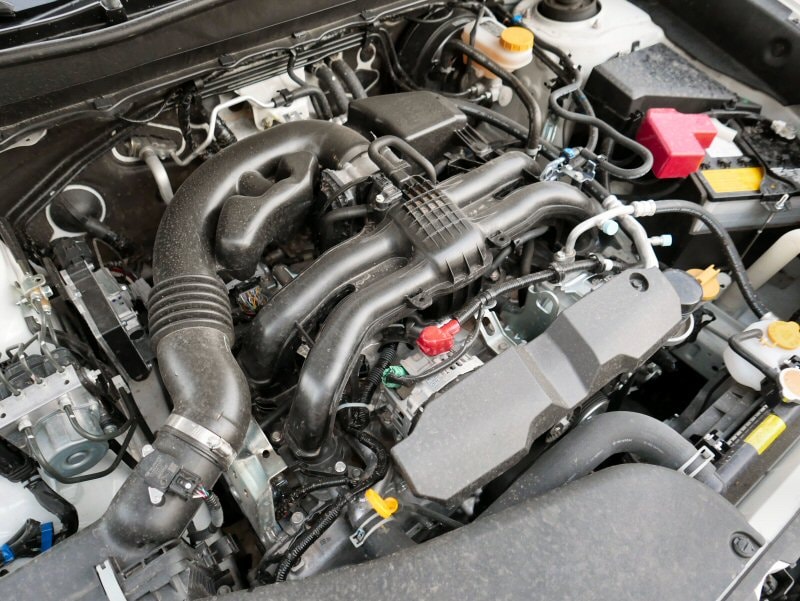
As Always, All-Wheel Drive
There's only a single member of the Subaru family that doesn't feature standard all-wheel drive, and it's not the 2016 Subaru Forester. The all-wheel drive system underpinning the compact SUV goes a long way towards informing its competent character in all manner of driving conditions, as its full-time torque distribution sends power to whichever wheel has the most traction in an effort to maintain forward momentum over snow-covered, icy, or rain-slicked roads. The Forester's CVT also offers a little extra off-road magic in the top two 2.5-liter models (as well as both turbocharged editions of the SUV). X-Mode is an all-wheel drive setting that can be accessed at the push of a button on the center console, and it helps the Subaru's all-wheel drive system maximize traction during low-speed driving. I've had the opportunity to pit X-Mode against a number of mild all-terrain obstacles, and it's performed as advertised. Combined with its 8.7-inches of ground clearance and hill descent control feature, the Forester straddles the line between soft-roaders and genuinely capable trail rigs, and it's more than most families will ever need when negotiating slippery driveways or rutted cottage roads.
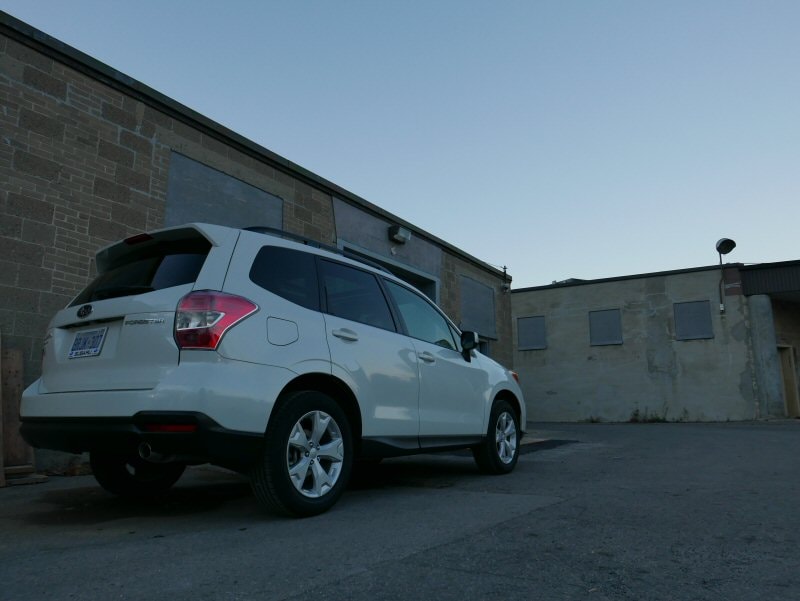
Remarkable Efficiency for Its Size
The 2016 Subaru Forester's CVT gearbox might be unexciting when paired with the entry-level 2.5-liter engine, but it's also remarkably efficient. The Forester is rated at 24-mpg city and 32-mpg highway in CVT form, which is an excellent performance by any compact hauler, and amazingly the manual only drops those figures by two and three miles per gallon, respectively. Most SUV buyers are willing to trade power for MPGs, but if you're not so inclined then why not enjoy both with the Forester 2.0XT? Once again the CVT casts its spell to enforce fuel mileage of 23-mpg in stop and go driving and 28-mpg on the highway for the turbocharged model, numbers which are barely below the manual-equipped, naturally-aspirated four-cylinder. As with any turbo, sticking your shoe leather to the floor on a regular basis will quickly eat into those stats, but it's a solid foundation for Subaru owners to build on.
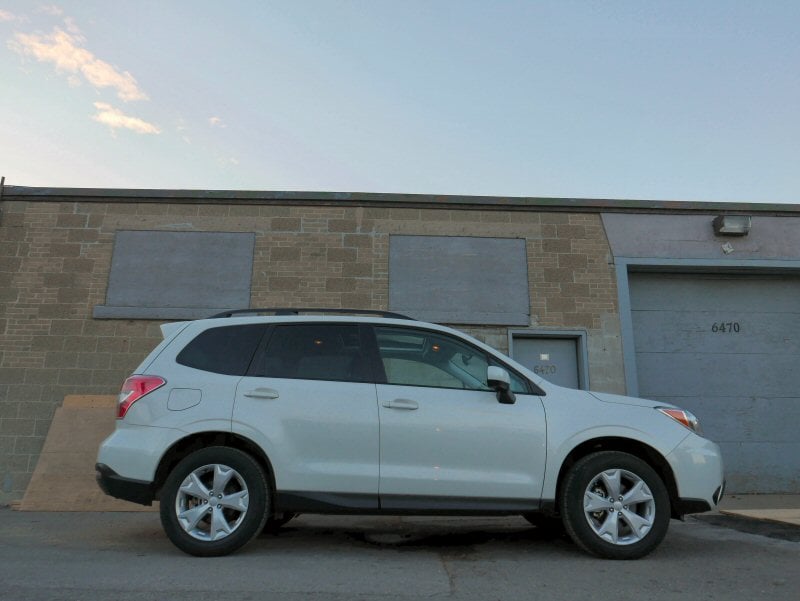
Pros and Cons
Pros: • Enormous inside for a compact SUV • Fuel efficient in all trim levels • Standard all-wheel drive • Excellent suite of safety features • Affordable Cons: • Base model feels pokey at times • Diminishing returns when moving up the trim ladder • No manual transmission for performance-oriented turbo model • No blind spot monitoring system • Infotainment system still lags behind segment leaders
